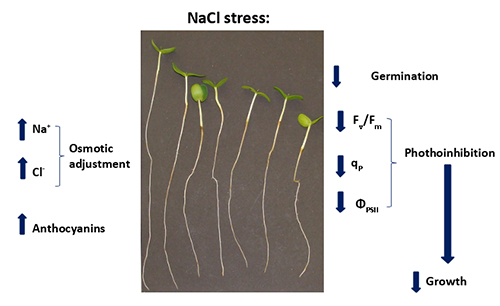Effects of salt stress on germination, seedling growth, osmotic adjustment, and chlorophyll fluorescence in Prosopis alba G.
Keywords:
Germination, seedling growth, osmotic adjustment, chlorophyll fluorescenceAbstract
Prosopis alba G. is a species of high forest importance in the phytogeographical region of Western Chaco. Although P. alba has been considered as salinity tolerant, its salinity thresholds for germination and seedling growth are unknown, as well as the physiological mechanisms involved in them. The aim of this study was to elucidate the mechanisms of tolerance of P. alba to salt stress. Seed germination, seedling growth, osmotic adjustment, and chlorophyll fluorescence were- analyzed. Germination was more tolerant to salinity than seedling growth, with thresholds of 600 mM and 500 mM, respectively. The species showed a high capability of osmotic adjustment, with values near to those observed in halophytes. The photochemical phase of photosynthesis was highly tolerant to saline stress, showing photoinhibition from 400 mM NaCl, as indicated by the fluorescence variables of chlorophyll. This behavior was associated to an increase in anthocyanin concentrations in the leaves.
Downloads

Published
How to Cite
Issue
Section
License
Aquellos autores/as que tengan publicaciones con esta revista, aceptan las Políticas Editoriales.










.jpg)




